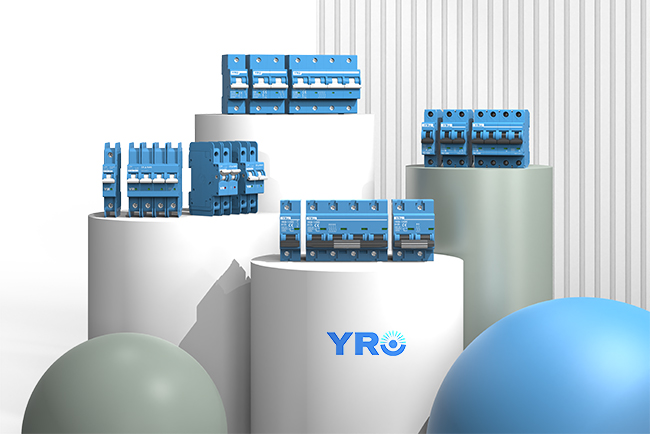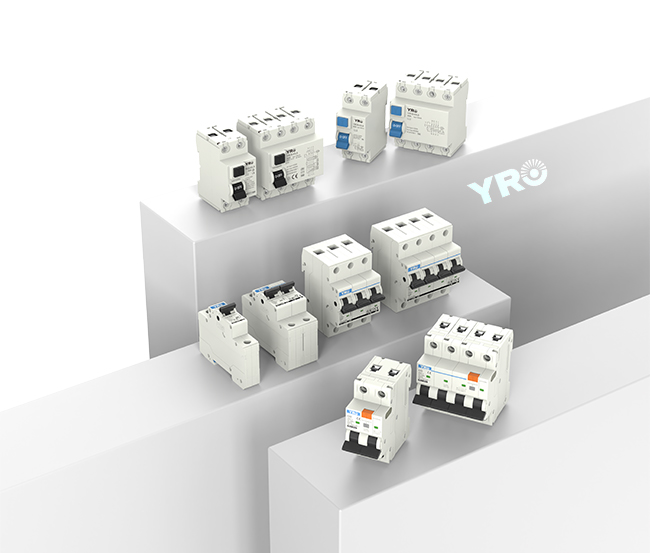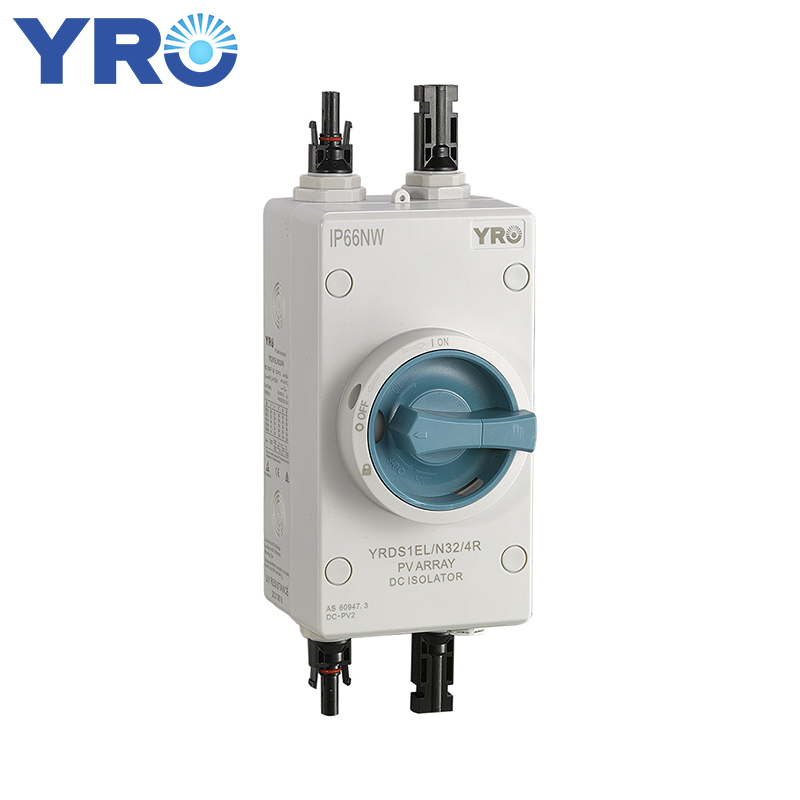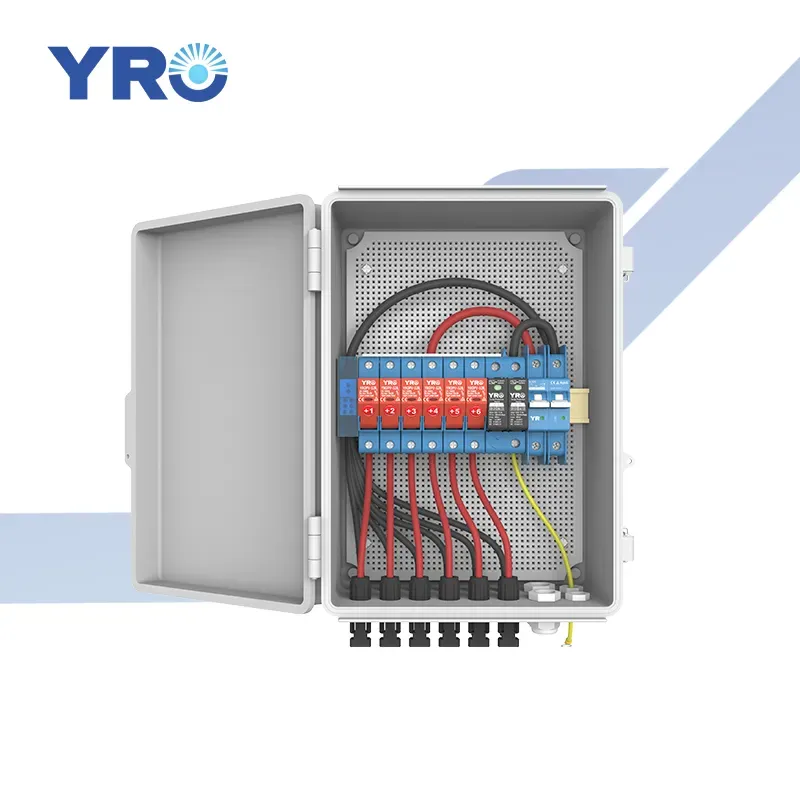In daily life, we more or less encounter situations where the circuit breaker trips, especially when the power load is high or there is a circuit fault. While circuit breaker tripping is a common phenomenon, it hides many underlying reasons.
—— Why Does My Circuit Breaker Keep Tripping?
1、Circuit Overload
In many cases, the reason for a circuit breaker tripping is a circuit overload. A circuit overload occurs when the current in the circuit exceeds the circuit’s maximum rated current, causing the circuit or equipment to handle too much current. Common signs of circuit overload include:
– The surface of the wires becoming hot or even discolored
– The circuit being interrupted and devices stopping working
– Electrical equipment making abnormal noises or slowing down
– The temperature of outlets or plugs rising, possibly emitting a burnt smell or showing discoloration
There are 2 ways to verify if the tripping is caused by an overloaded circuit, and one is a more time-consuming method: if the circuit breakers in a room keep tripping, the homeowner can test for an overloaded circuit by turning off all switches in the affected area and unplugging all appliances and devices. Once the circuit breaker is turned back on, appliances can be turned back on one by one, and the homeowner can wait a few minutes in between to see if the circuit remains on. If the circuit breaker trips again before all appliances are turned on, the experiment can be repeated, this time turning on the devices in a different order. It may take several such experiments to find out how many appliances can be operated simultaneously before the circuit is overloaded.
Another shortcut is to install a smart meter or load monitor so that you can keep track of the current usage of the circuit and be alerted when it is overloaded. Yueqing Yirui Electric Co Ltd specializes in the production and sale of rail-mounted smart meters. YRO smart meters are easy to install and can be installed by yourself without a professional electrician. Even in the case of accidental power failure, the meter value will not be cleared to zero, so that you have no worries!
2. Short Circuit
At other times, tripping may be caused by a short circuit. A short circuit occurs when the live wire comes into direct contact with the neutral wire or another live wire, causing a sudden increase in current. The circuit breaker then automatically cuts off the power to protect the circuit and equipment. Common signs of a short circuit include:
– Seeing sparks or flashes near the short circuit point or electrical equipment
– The circuit breaker tripping instantly
– All electrical equipment connected to the short circuit circuit suddenly losing power
– Wires or electrical equipment smoking or emitting a burnt smell
– The surface of wires or outlets becoming hot to the touch
– Electrical equipment failing to restart or operating abnormally
The method to verify if a short circuit is causing the tripping is similar to checking for an overloaded circuit. First, disconnect all electrical equipment and outlets, then reconnect them one by one. When the short-circuited device is connected, the circuit will trip immediately. If available, professional electrical testing tools such as an insulation resistance tester or leakage protector tester can be used for a detailed inspection. Short circuits can pose a significant fire hazard, so it is best to have a professional electrician conduct inspections and repairs. Until the issue is resolved by a professional, it is advisable to stop using the affected outlets or equipment.
Yueqing Yirui Electric Co Ltd specializes in the production and sale of leakage protectors. Our leakage protectors feature high-temperature protection; if a flame occurs, they will automatically extinguish it, are non-flammable, and high-temperature resistant, effectively enhancing safety.
3. Ground Faults
Another potential reason for circuit breaker tripping is a ground fault. A ground fault occurs when current flows through an unintended or abnormal path to the ground, typically due to damaged wire insulation or equipment malfunction. The reason why it is dangerous to walk in water during a ground fault is that water is conductive. If someone walks into an area with current flow, the current can pass through the body, causing electrical shock, which can be lethal. Additionally, because water flows, the current can spread along the water, expanding the hazardous area. Common signs of a ground fault include:
– Circuit breaker or ground fault circuit interrupter (GFCI) tripping, causing circuit interruption and devices to stop operating
– Electrical equipment casing becoming live, with a possible electric shock sensation upon contact
– Sparks at electrical equipment or wiring points, potentially accompanied by a burnt smell
– Equipment running unstably, experiencing performance drops, or failing to start properly
To verify if a ground fault is causing the circuit breaker to trip, one method is to check if the insulation of wires and equipment is damaged. Another method is to install a GFCI, which can promptly cut off leakage current.
Aside from the issues mentioned above, equipment malfunction, aging or damaged wiring, and environmental factors can also cause circuit breaker tripping. According to the Electrical Safety Foundation International (ESFI), “thousands of people in the United States are seriously injured or electrocuted in their homes each year due to electrical fires, accidents, or shocks.” While homeowners may attempt to replace or repair circuit breakers themselves to save on electrician costs, electrical work is not suitable for everyone. Regular inspections and maintenance can effectively prevent circuit breaker tripping and enhance the reliability and lifespan of electrical equipment.
Yueqing Yirui Electric Co Ltd specializes in producing and selling GFCIs. Our GFCIs come equipped with a visible window, making the power switch clearly visible and helping to avoid operational errors effectively.
 ——Is It Dangerous If My Circuit Breaker Keeps Tripping?
——Is It Dangerous If My Circuit Breaker Keeps Tripping?
A circuit breaker that keeps tripping is a warning signal indicating that one of your circuits is frequently overloaded. Each circuit has a maximum current capacity, and exceeding this limit can pose a fire hazard. The circuit breaker trips to protect your personal safety and property from electrical fires. Here are the dangers associated with a circuit breaker that keeps tripping:
– Potential Fire Hazard: A constantly tripping circuit breaker may indicate problems such as overload, short circuit, or ground fault in the circuit, which can cause the wires to overheat and increase the risk of fire.
– Electrical Equipment Damage: Frequent tripping can subject electrical equipment to repeated current surges, shortening the equipment’s lifespan and potentially leading to equipment failure.
– Electrocution Risk: Ground faults or damaged wires can cause current leakage, which can be conducted through the equipment’s casing or other conductive materials, increasing the risk of electrocution.
– System Instability: Frequent power interruptions can affect the stability of the electrical system, causing data loss or damage to computers, servers, and other critical equipment.
– Personal Safety Threat: A circuit breaker that keeps tripping can cause electrical sparks or explosions, posing a safety threat, especially in flammable or explosive environments.
 ——How Do I Fix a Circuit Breaker That Keeps Tripping?
——How Do I Fix a Circuit Breaker That Keeps Tripping?
1. Circuit Faults:
Circuit Overload causing tripping:
Short-term solution: Unplug unnecessary appliances.
Long-term solution: Hire a professional electrician to rewire, using thicker wires and higher-rated circuit breakers.
2. Short Circuit causing tripping:
Short-term emergency measures:
– After turning off the power, use a multimeter to check the resistance of the equipment to determine if there is an internal short circuit.
– Check the wires and outlets for damage, burn marks, or loose connections to ensure all connections are secure and reliable.
Long-term strategies:
– Repair or replace damaged equipment and wires.
– Optimize circuit design to avoid overload.
– Improve the grounding system to ensure good grounding.
– Install high-quality electrical components to reduce failure rates.
– Perform regular maintenance and inspections of the electrical system to prevent potential problems.
3. Ground Fault causing tripping:
Short-term emergency measures:
– After turning off the power, find the equipment that may be causing the ground fault and temporarily isolate it from the circuit to prevent the fault from spreading.
– Quickly check the grounding connections of electrical equipment and outlets to ensure the grounding wires are securely connected and prevent further ground faults.
– Immediately notify a professional electrician for further inspection and treatment to ensure the ground fault is thoroughly resolved.
Long-term solutions:
– Repair or replace damaged grounding wires to ensure the reliability of the grounding system.
– Install a high-quality grounding system to improve grounding effectiveness.
– Install ground fault circuit interrupters to increase circuit safety.
– Regularly inspect and maintain the grounding system to ensure its long-term stable operation.
By taking timely emergency measures and implementing long-term solutions, you can effectively prevent and resolve short circuit and ground fault issues, ensuring the safety and stability of your electrical system.

 ——Is It Dangerous If My Circuit Breaker Keeps Tripping?
——Is It Dangerous If My Circuit Breaker Keeps Tripping? ——How Do I Fix a Circuit Breaker That Keeps Tripping?
——How Do I Fix a Circuit Breaker That Keeps Tripping?







